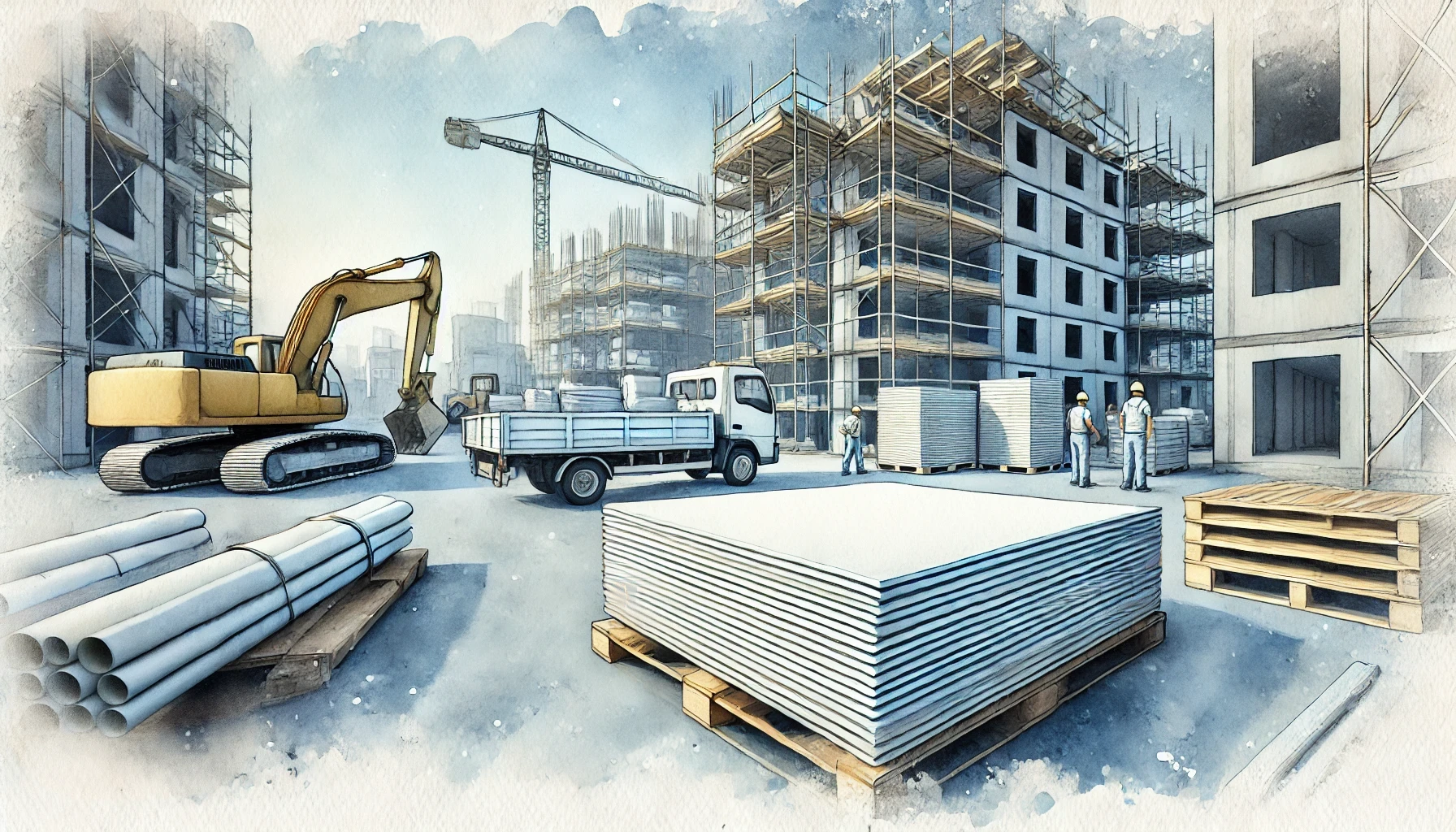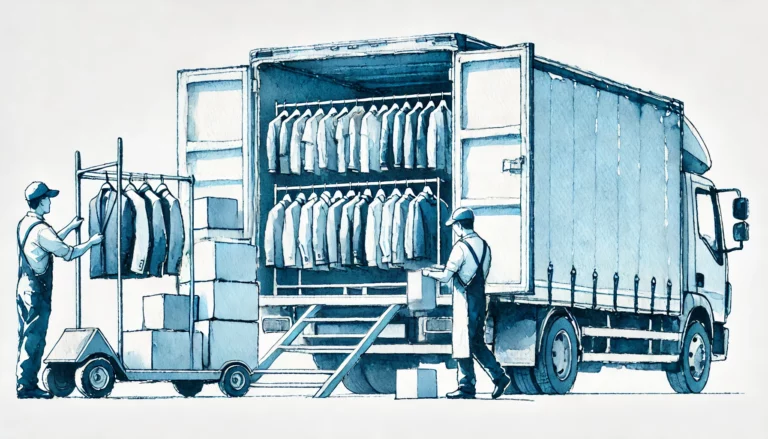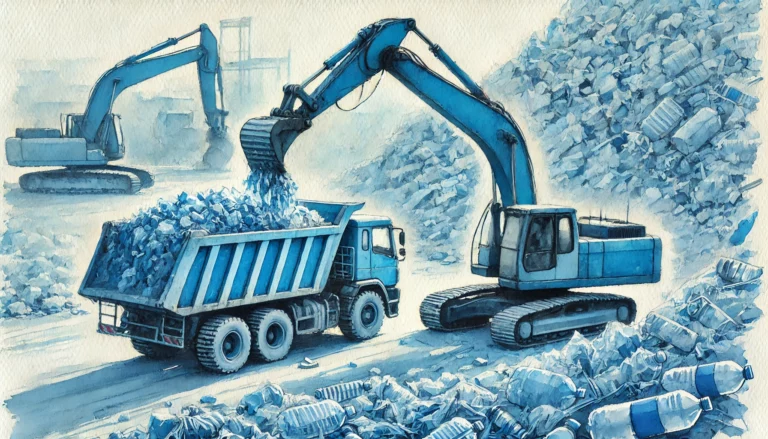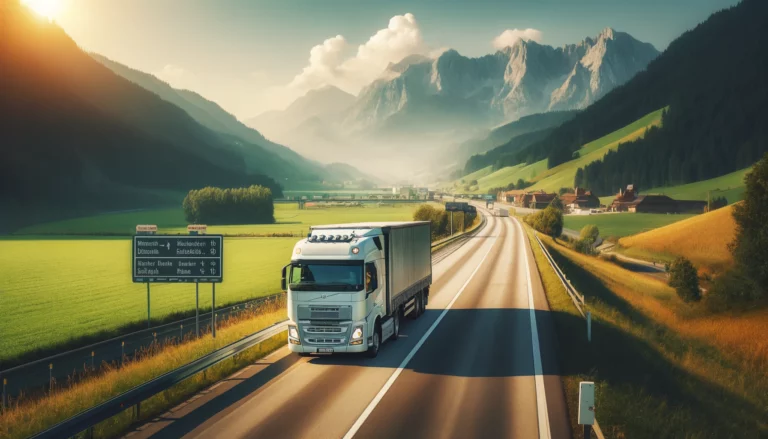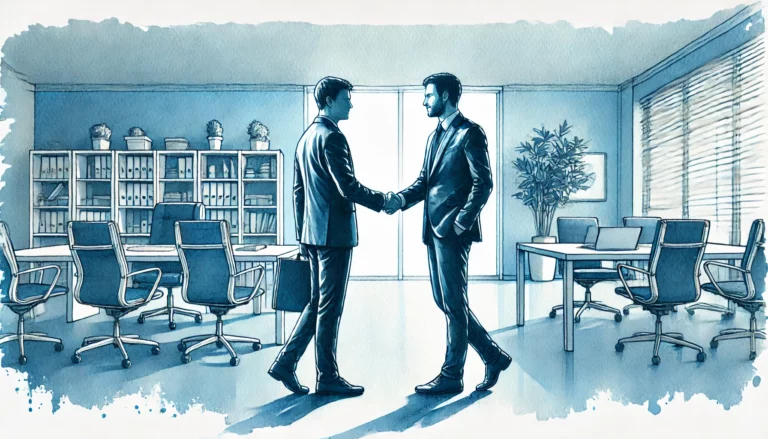Plasterboard recycling in Europe: challenges and solutions
Plasterboard recycling in Europe is a textbook circular-economy opportunity that underperforms. We know how to close the loop but we fail when materials arrive wet, mixed, or too far from a plant to make sense. The winners apply three rules: plan selective demolition, enforce quality specs at the skip, and design logistics around real gate fees and haul distances. Here you’ll find the numbers, country rankings, and what policy has actually changed—plus a clear playbook for moving from “good intentions” to verified tonnes. To execute at scale, work with a seasoned waste management advisor who can coordinate standards, routes, and offtakes.
Plasterboard, also called drywall, makes up a major portion of Europe’s construction and demolition waste. Over 2 million tonnes go to landfills every year in the EU. This material emits toxic hydrogen sulfide gas when it breaks down, posing serious risks to both people and the environment.
Gypsum, which forms the core of plasterboard, is fully recyclable. Its chemical composition remains unchanged through use, which means it can re-enter production without loss of quality. Despite this, based on the report by Ana Jiménez-Riveroa and Justo García-Navarro from Polytechnic University of Madrid, 87% of post-consumer plasterboard waste still ends up in landfills across EU-28 countries. The call for plasterboard recycling in Europe is about protecting limited resources and designing smarter waste systems.
Plasterboard recycling in Europe: data‑driven progress
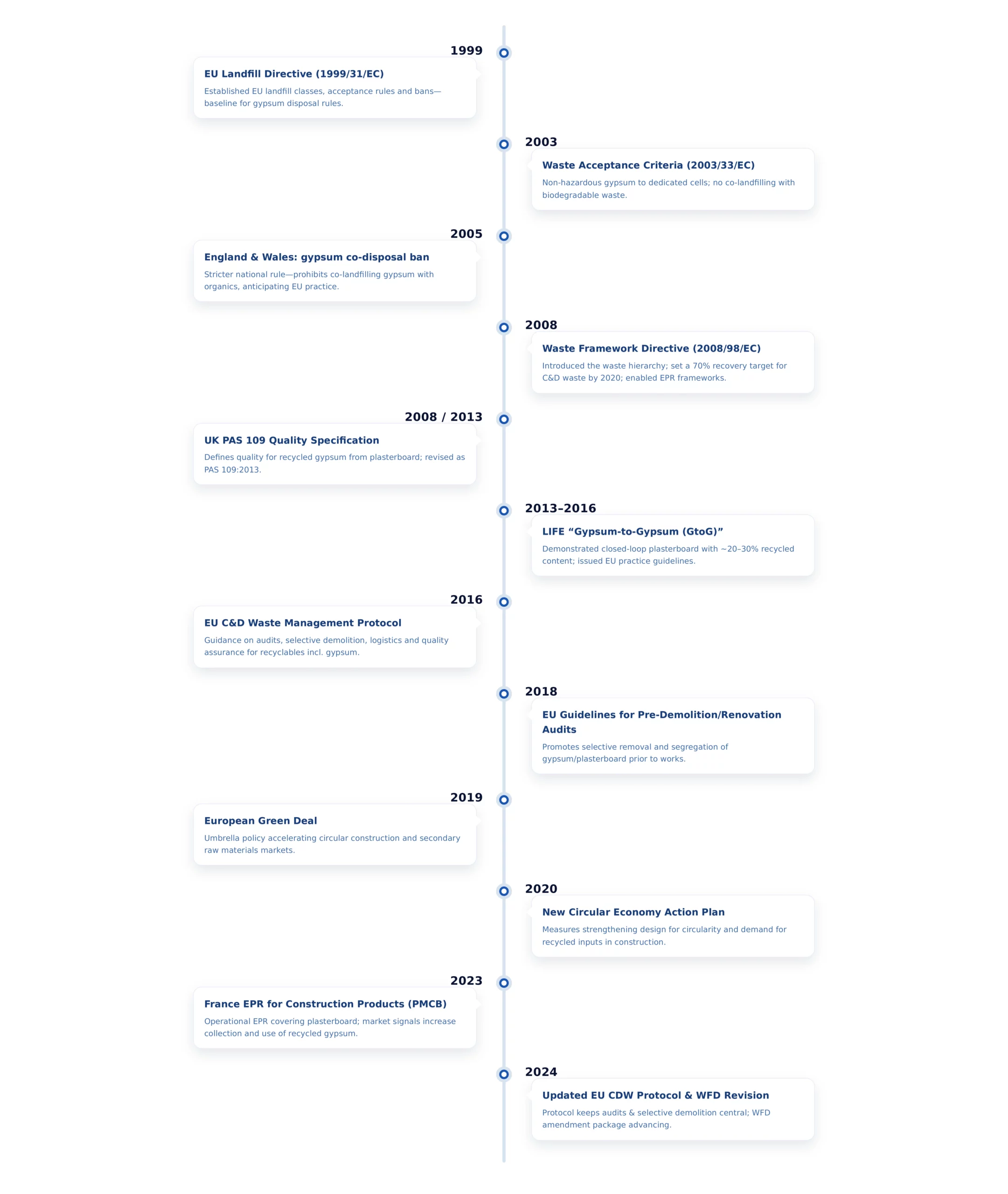
Even though plasterboard and gypsum waste law changed over the years (as shown in the timeline above), recycling progress across Europe is still far from consistent. Countries like Denmark and Sweden are leading the effort. Denmark’s recycling rates skyrocketed thanks to mobile recycling units and organized local collection. Meanwhile, Germany, Italy, Poland, and other countries primarily recycle pre-consumer gypsum waste—leftover material from manufacturing. In these regions, post-consumer gypsum waste often still ends up in landfills. Which countries produce the most construction and demolition waste in Europe? Eurostat’s data is evident:
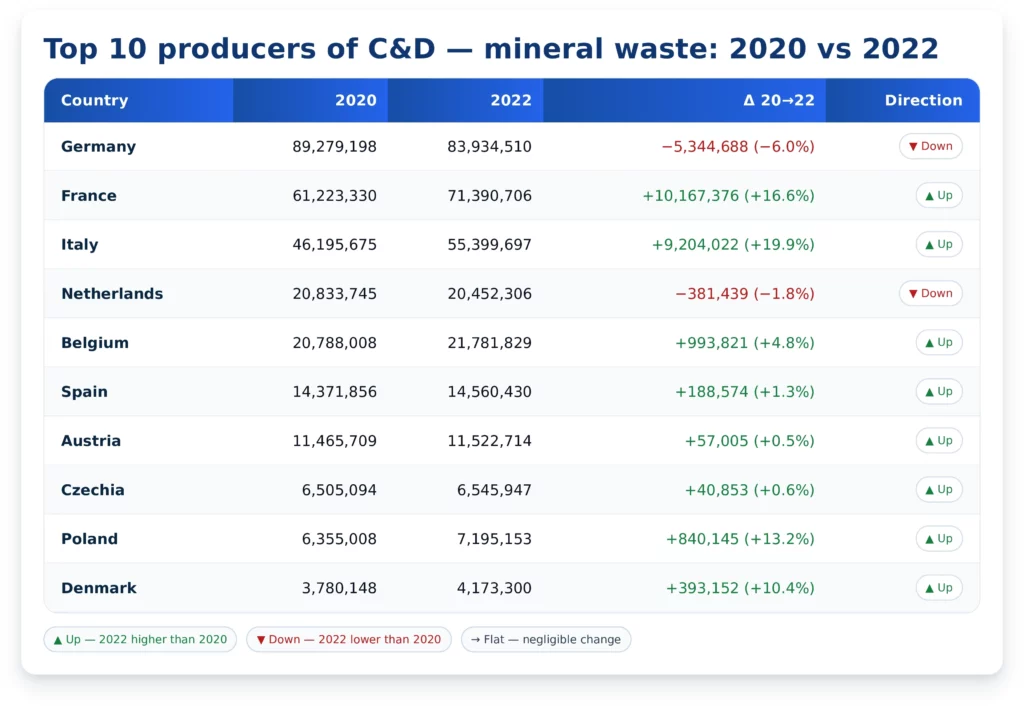
By 2019, only 600,000 tonnes of recycled gypsum were used in new plasterboard production across the EU, despite more than 2 million tonnes being available annually. The Gypsum to Gypsum (G-to-G) project, funded by the EU LIFE Programme, proved that closed-loop recycling works. Manufacturers were able to produce plasterboard containing up to 30% recycled gypsum—without reducing quality. The project also highlighted the importance of selective demolition, which keeps waste cleaner and more recyclable. Eurogypsum continues to push this forward by aligning recycling standards and promoting collaboration across member states.
Every company faces different recycling challenges. If you’d like tailored advice on how to optimize your plasterboard waste management, reach out to us:
Why progress is uneven: drivers and deterrents
Sometimes even the smallest changes can make big difference. Why certain countries are better at handling gypsum waste while others struggle?
- Nations with landfill taxes and mandatory sorting rules usually perform better. Denmark, for example, applies certification schemes and promotes waste mapping, which drives recovery rates upward.
- Plasterboard is often contaminated with adhesives, metal fixings, and even asbestos. This makes separation costly and labor-intensive, making it harder for countries with underdeveloped infrastructure to handle such complex wasts streams.
- Recycled gypsum reduces material costs by about 9.5%, but long-distance transport and cleaning costs can erase those savings.
- Many construction firms still default to landfilling, especially where regulations aren’t enforced, or deconstruction practices are not standard.
What makes plasterboard difficult to recycle?
In practice, plasterboard recycling faces recurring hurdles:
- Plasterboard consists of gypsum between layers of paper, plus adhesives or metals. Clean separation is necessary to ensure recycling quality.
- Gypsum is hygroscopic, meaning it absorbs moisture. This makes it harder to recycle if not stored or sorted properly.
- When mixed with organic waste in landfills, plasterboard may emit hydrogen sulfide—a hazardous gas.
- Many areas lack local recycling plants, so plasterboard must travel long distances, increasing cost and emissions.
- Without clear, unified EU rules, recycling programs vary greatly in quality and effectiveness.
Waste-management advisors are increasingly vital. They help companies meet EU guidelines like BEMP (Best Environmental Management Practices). Their work improves material quality and supports reliable recycling markets. With over a decade in waste management, we began by handling transport permits and evolved into an end-to-end service because clients needed more than haulage—they needed accountable processing at the right, licensed facility. Waste Transport Solution is the go-to partner for organising waste transport and management that is environmentally sound and fully compliant with EU and national law.
Talk to our experts about an end-to-end plasterboard recycling strategy:
Looking ahead: cementing a circular gypsum future
Change is coming. The EU is working on updates to the Waste Framework Directive, which will introduce material-specific recycling targets. This shift will move beyond general construction waste goals and focus on high-impact materials like gypsum. Additionally, the Construction Products Regulation (CPR) is likely to require minimum recycled content and carbon accounting in plasterboard and other building materials.
On the ground, green public procurement policies, material passports, and digital traceability systems are gaining momentum. These tools make it easier to prove that recycled gypsum meets quality and safety standards. Selective deconstruction is also becoming more common. By dismantling rather than demolishing, builders can keep plasterboard streams clean and recyclable. If these efforts continue to expand, closed-loop gypsum recycling could become the European norm.
What’s next?
Europe is positioned to lead in gypsum recycling. With a growing body of evidence, clear policy ambitions, and successful pilot projects like G-to-G, the continent has what it takes to reduce landfill waste and close the loop.
Still, broader change requires shared responsibility. Governments, recyclers, and builders need to align their efforts. Stronger enforcement, better on-site practices, and smarter design choices can all make plasterboard recycling in Europe a success—not just in theory, but in practice.
To translate intent into practice, Waste Transport Solutions offers actionable improvements for plasterboard waste management and relieves your team—both literally (licensed haulage) and figuratively (end-to-end coordination and compliance). Email office@wastetransportsolutions.eu to get an end-to-end, compliant plan for your plasterboard waste.

